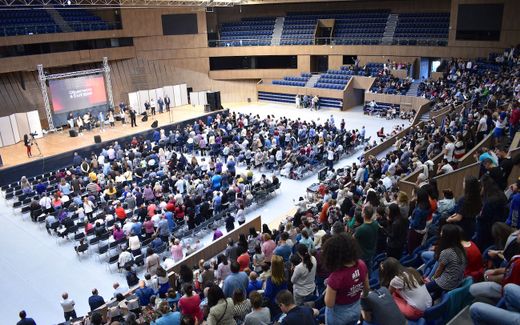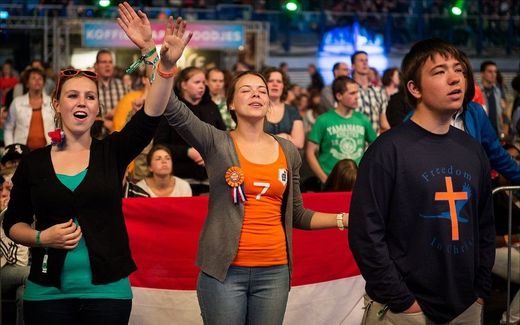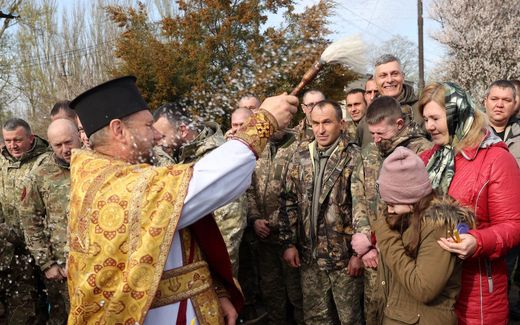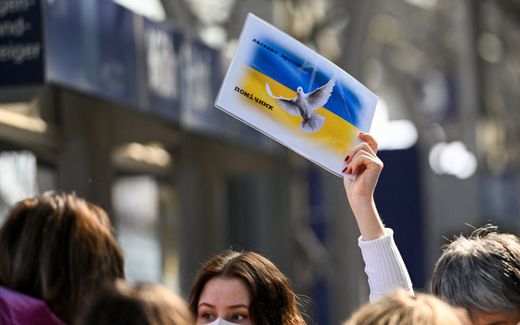World Council of Churches turns 75: small steps to more unity among Christians
27-06-2023
European Union
Maarten Stolk, RD
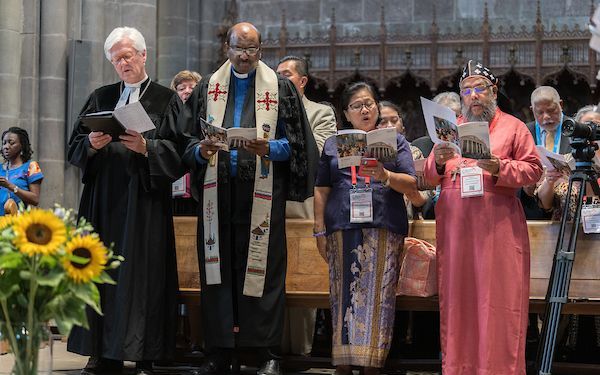
The visible unity of the church has been on the agenda of the World Council from the beginning. Photo WCC
European Union
The World Council of Churches has fought for Christian unity for 75 years. Yet the jubilant organisation, which claims to represent 580 million Christians, is only progressing in small steps. Six questions and answers.
How did the World Council of Churches come into being?
The World Council is rooted in the nineteenth-century missionary movement, culminating in the first World Missionary Conference in Edinburgh, Scotland, in 1910. Other ecumenical initiatives at the time include the "Life and Work" (relief work) and "Faith and Order" (theology, sacraments and church order) movements. Church leaders voted to establish the World Council of Churches in 1937 and 1938, but the outbreak of World War II delayed it.
On 23 August 1948, the moment is finally there. In Amsterdam, 354 delegates from 147 churches from 44 countries meet at the assembly (meeting) of the World Council of Churches. The first secretary-general is a Dutchman: Willem Visser 't Hooft, who leads the organisation until 1966.
Who all participate in the World Council?
The World Council has some 350 members from more than 120 countries, representing about 580 million Christians. Until 1961, the World Council consisted only of Protestant churches: Lutherans, Reformed, Anglicans, Methodists and Baptists. After that, the Eastern Orthodox churches join. The Roman Catholic Church is missing because it believes that unity can only be achieved by returning all Christians to the bosom of the mother church. Nevertheless, the Church of Rome is an observer at the World Council and participates actively in various bodies.
Churches from Africa and South America are occupying an increasing place in the World Council. As a result, the organisation is also changing denominational colours: the mostly liberal churches in the West are retreating. Contacts are also increasingly being made with churches that are part of the Pentecostal and charismatic movements.

The Russian Orthodox Church is the largest member church of the World Council of Churches. However, it is controversial for its support for the Kremlin in the war against Ukraine. For a while, it seemed that the Russian Orthodox Church would lose its membership. However, a church can only be excluded on theological grounds.
Incidentally, there have been tensions between Orthodox and Protestant churches in the World Council for some time. In 1998, for instance, the Eastern Orthodox churches threatened to leave the World Council because they considered the Protestant member churches from Western Europe and North America too dominant. This was particularly about issues such as women in church ministry and homosexuality, on which Western churches take a more liberal stance.
How is the World Council organised?
The headquarters of the World Council of Churches is located in the Swiss city of Geneva.
The assembly, the highest governing body of the World Council, is held every six to eight years. During the assembly, the policies of member churches are discussed, public statements are issued, and decisions are made on strategy for the coming years. There have been a total of 11 assemblies: in Amsterdam (Netherlands, 1948), Evanston (United States, 1954), New Delhi (India, 1961), Uppsala (Sweden, 1968), Nairobi (Kenya, 1975), Vancouver (Canada, 1983), Canberra (Australia, 1991), Harare (Zimbabwe, 1998), Porto Allegre (Brazil, 2006), Busan (South Korea, 2013) and Karlsruhe (Germany, 2022).
The central committee is the highest decision-making body of the World Council, elected by the last assembly held. The central committee meets every 12 to 18 months. It is responsible for implementing the policies adopted at the last assembly. The governing body consists of about 150 members and is re-elected every assembly.
An executive committee is elected from the central committee. The secretary-general, currently South African Jerry Pillay, holds that position on both the central committee and the executive committee.
What is the state of church unity?
The visible unity of the church has been on the agenda of the World Council from the beginning. However, the latter does not aspire to a large super-church but rather wants to be primarily a federation of independent churches.

The report "The Church. Towards a Common Vision", adopted in 2013 in Busan, South Korea, defines the church as the "plan of the triune God for the salvation and reconciliation of mankind". The unity of the church, humanity and creation belong together, the World Council states.
The trend is no longer to agree theologically first but to go on the road together and thus get to know each other better -and also spiritually. The ultimate goal is to celebrate Communion or Eucharist together.
What did the World Council achieve in the 75 years of its existence?
The World Council is a kind of spider in a web of hundreds of different churches worldwide. These now work together, to varying degrees, and share knowledge in theology and liturgy or make a joint commitment to peace, justice and creation. For instance, there are joint declarations on baptism and Holy Communion, among others. The World Council of Churches also holds an annual Week of Prayer for Christian Unity.
How did the World Council celebrate its 75th birthday?
The central committee of the World Council of Churches convened an anniversary celebration on Sunday at Saint Pierre in Geneva -the church of the reformer John Calvin. German Evangelical Lutheran Bishop Dr Heinrich Bedford-Strohm, the moderator of the central committee, meditated on John 1:35-51: "Behold, the Lamb of God!"
An anniversary meeting took place in the afternoon at the "Visser 't Hooft Hall" in the Ecumenical Centre in the Swiss city. It looked back at the 75-year history of the organisation. And looking ahead to "signs of hope".
This article was translated by CNE and published by the Dutch daily Reformatorisch Dagblad on June 24, 2023
Related Articles

